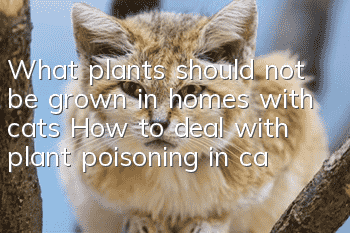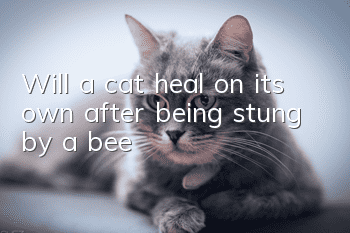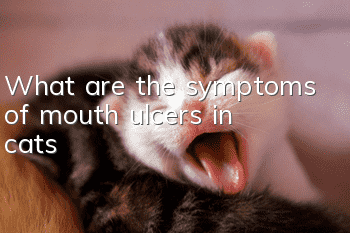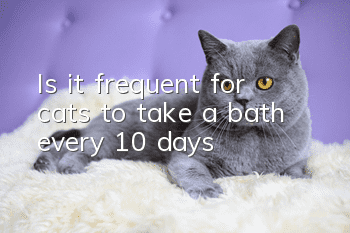What plants should not be grown in homes with cats? How to deal with plant poisoning in cats

Cats will eat some green plants to encourage them to vomit hair balls in their stomachs. Professional cat grass is not harmful to cats and has no toxicity. However, some other plants at home can easily cause poisoning after being eaten by cats. Phenomenon, let’s talk about what kind of plants should not be planted at home, and what should we do if a cat accidentally eats a poisonous plant.
1. What plants cannot be grown in households with cats?
1. Maidenhair fern: the whole plant. Overeating by accident, causing diarrhea and vomiting;
2. Manchuria: the whole plant. Eating a large amount by mistake will cause nervous system paralysis and death;
3. Amaryllis (Amaryllis): bulb. Eating bulbs by mistake can cause vomiting, lethargy, diarrhea and other symptoms;
4. Desert rose: the whole plant, the latex is highly toxic. Accidentally ingesting stems, leaves or milk can cause heart disease such as accelerated heartbeat and arrhythmia;
5. Catharanthus roseus: the whole plant. Accidental ingestion can cause cell atrophy, leukopenia, thrombocytopenia, muscle weakness, limb paralysis, etc.;
6. Rhododendron: The whole plant, flowers and leaves are highly toxic. Accidental ingestion will cause symptoms such as vomiting, drop in blood pressure, respiratory depression, coma and diarrhea;
7. Hydrangea: the whole plant. Accidentally eating stems and leaves may cause symptoms such as diarrhea, vomiting, shortness of breath, and blood in the stool;
8. Poppy: The whole plant is poisonous, and the fruits are more toxic. After accidentally eating a large amount of stems and leaves, symptoms such as mania, lethargy, rapid heartbeat, uneven breathing, and even death may occur;
9. Chinese Narcissus: (the whole plant, the bulb is the most toxic) can cause vomiting, diarrhea, lethargy, weakness, and death in severe cases;
10. Iris: (the whole plant, especially the rhizome and seeds) if consumed in excess, can lead to inflammation of the digestive tract and liver, vomiting and diarrhea;
11. Hyacinthus: (whole plant, especially bulbs) stomach discomfort, cramps, vomiting and diarrhea;
In addition, there are some relatively rare ones. Let’s list them one by one: Amaranth, alocasia, monstera, morning glory, Christmas red, dieffenbachia, delphinium, bell, nightshade, Lantana, poinsettia, Christmas fruit, sweet pea, oleander, lupine, primrose, wisteria, iron tree, crocus, castor bean, avocado, buttercup, tiger thorn plum, caladium, tianmi, dong Birds, cineraria, baby's breath, aloe vera, holly, alfalfa, lily of the valley, chrysanthemums, white lilies and tiger lilies, longevity flowers.
2. How to deal with plant poisoning in cats
1. Artificial vomiting, the simplest medicine is light salt water, which can induce vomiting.
2. Give gastric lavage with 1:5000 potassium permanganate solution or 2% to 4% sodium bicarbonate solution.
3. Pour in the universal antidote (10g medicinal carbon, 5g tannic acid, 5g magnesium oxide) suspension.
4.50% magnesium sulfate 40~60mlcatharsis.
5. Atropine can be given 1 to 2 mg/time, or anisodamine 10 to 20 mg/time, or scopolamine 0.3 to 0.6 mg/time intravenously (just choose one), To antagonize signs of muscarinic poisoning. Repeated administration can be given if necessary, but it is not advisable to require atropinization like organophosphorus poisoning, just to control the symptoms and relieve them.
6. Rehydration and diuresis to prevent cats from dehydration.
7. Symptomatic treatment, depending on the cat poisoning by different plants, use different drugs to detoxify.
3. What plants can be planted in households with cats?
1. Spider plant: Not only is the spider plant harmless to cats, but it is hung in such a way that it will not be destroyed by curious creatures like cats, unless of course you have an adventurous cat at home.
2. Begonia: This common plant can not only beautify the home, but can also be used as medicine. It is a very safe plant, and it doesn’t matter even if the cat eats it.
3. Rosemary: This herbaceous plant is not only favored by French chefs, but also loved by cats. Planting a pot of rosemary can not only bring fragrance to the room, but also become cat food. of flavor-enhancing spices.
4. Alfalfa sprouts: Plant a small pot and place it on your desk. It can beautify the environment and give your tired eyes a rest. It is also a good medicine for cats to turn into hair balls and help digestion.
5. Catnip: About half of cats cannot resist the temptation of catnip. Catnip can give cats the illusion of happiness without harming their health. It can be used as daily entertainment food for cats.
6. Wheatgrass: Wheatgrass is the most economical and affordable cat grass. Cats will give priority to palatable wheatgrass as their chewing objects. When their physical needs are met, cats will naturally not bite you anymore. Other plants are watching eagerly.
Regardless of whether the plants are poisonous to cats, the destructive power of cats on plants cannot be underestimated. Many families with cats also plant plants, and they will be destroyed by cats to varying degrees. Therefore, it is best for owners to separate plants from cats. This will better protect plants and cats.
- What are the signs that a cat is in a bad mood?
- Why does a cat have so much dandruff?
- Why does a cat eat less?
- After the cat eats the cat food, it makes the action of digging the cat litter
- Can cats develop gills after being neutered?
- How many days can a cat take a bath after being vaccinated? Do you really know?
- What toys are suitable for cats, and how should you choose toys for your cat?
- What should I do if my cat sticks out its tongue and has shortness of breath when it’s hot?
- What are the symptoms of genetic defects in folded-eared cats? When does the genetic defect occur?
- What causes cat ear inflammation? What medicine should I take?



